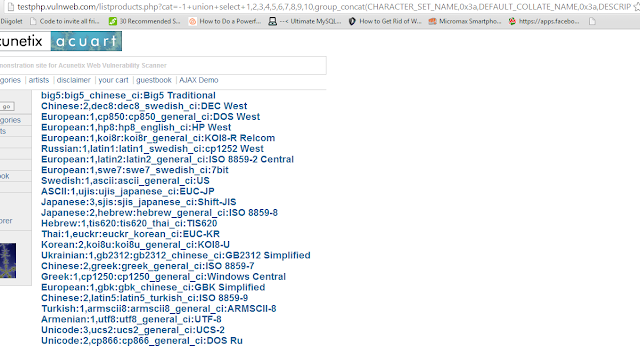Kali 2.0 (Kali Sana) was released last week which means that we get to spend some time sifting through Offensive Security‘s latest release looking at all the new tools and tricks. Offensive Security promised us a better, more powerful penetration testing platform, and my preliminary look at 2.0 shows that they delivered.
Here is my previous article about kali linux 1.0: An Introduction To Hacker’s OS: Kali Linux Setup Tutorial
Kali Linux 2.0 (Kali Sana) is the best Penetration testing distribution,well organized and with core tools and packages needed by Pentester to get started right after installation. Kali Linux 2.0 will be a rolling distribution and updates will be pulled continuously from debian testing. Kali 2.0 is based on debian 8 and available in lots of flavors. Kali Linux 2.0 ( Kali Sana) natively supports different desktop environments like xfce,gnome3,kde, mate,lxde,e.t.c
Kali 2.0 switched over to the GNOME3 interface which brings a much needed update to the user experence. This new UI gives you a customizable favorites bar, which will certainly come in handy, having your common tools at the ready at all times. The new Applications menu in the top bar comes with new, easier-to-understand groupings. This is wonderful if you’d like to have a quick glance at all of your available applications.
Better still, Kali 2.0 also natively supports KDE, Xfce, MATE, e17, lxde and i3wm so if you’re not a fan of the default, you can switch fairly easily to one that you’re more fond of.
Kali 2.0 includes a variety of previously-unavailable-by-default toolset including Maltego, Responder from SpiderLabs, and a sleu of wireless penetration testing tools. All of these and more are accessible through the the multi-level navigation mentioned previously.
One of my personal concerns with the previous version of Kali was that updates weren’t frequent enough and tools weren’t updated as often as they should. Kali 2.0 is now a rolling distribution, meaning more updates to both the operating system and the natively supported tools.
This version of kali Linux is highly expected among the world. Because the teaser which was released by OPSC about this project became viral in internet. It was a 3.13 mins teaser which describes the new features added to the 2.0 version of this Kali Linux. Let’s see the new features added to this version of Kali Linux briefly.
Here is my previous article about kali linux 1.0: An Introduction To Hacker’s OS: Kali Linux Setup Tutorial
Kali Linux 2.0 (Kali Sana) is the best Penetration testing distribution,well organized and with core tools and packages needed by Pentester to get started right after installation. Kali Linux 2.0 will be a rolling distribution and updates will be pulled continuously from debian testing. Kali 2.0 is based on debian 8 and available in lots of flavors. Kali Linux 2.0 ( Kali Sana) natively supports different desktop environments like xfce,gnome3,kde, mate,lxde,e.t.c
The Look Of Kali Linux 2.0
Kali 2.0 switched over to the GNOME3 interface which brings a much needed update to the user experence. This new UI gives you a customizable favorites bar, which will certainly come in handy, having your common tools at the ready at all times. The new Applications menu in the top bar comes with new, easier-to-understand groupings. This is wonderful if you’d like to have a quick glance at all of your available applications.
Better still, Kali 2.0 also natively supports KDE, Xfce, MATE, e17, lxde and i3wm so if you’re not a fan of the default, you can switch fairly easily to one that you’re more fond of.
The Tools
Kali 2.0 includes a variety of previously-unavailable-by-default toolset including Maltego, Responder from SpiderLabs, and a sleu of wireless penetration testing tools. All of these and more are accessible through the the multi-level navigation mentioned previously.
The Updates
One of my personal concerns with the previous version of Kali was that updates weren’t frequent enough and tools weren’t updated as often as they should. Kali 2.0 is now a rolling distribution, meaning more updates to both the operating system and the natively supported tools.
Improved Features of Kali Linux 2.0
This version of kali Linux is highly expected among the world. Because the teaser which was released by OPSC about this project became viral in internet. It was a 3.13 mins teaser which describes the new features added to the 2.0 version of this Kali Linux. Let’s see the new features added to this version of Kali Linux briefly.
1. Multi-Tasking :
 |
Multi Tasking Feature Seen at Right Side Of Desktop |
It is the best feature of Kali Linux v.2.0 that I wish to mention here. It has multi taking feature such as android. The bitter truth is, the multi tasking feature in Kali Linux v.2.0 is better than they of multi tasking in android. It enables the user to run 10+ programs at instant. The experience of this feature depends upon the hardware of the system. All though it has multi tasking feature, making it perfect needs a good compeer or laptop with better specifications. Or else, it may not respond and led to force close of application. Whenever the usage of any feature exceeds, it leads to force close. This is common in all the operating system.
2. Redesigned User Interface :
3. Restructured Menu and Tool Categories:
This adds beauty to this new version of llinux. Not only beauty, but also an feel of pentrstion testing.
4. Weekly Upstream Updates of Core Toolsets:
Users can either update it manually or automatically.
Metasploit is one of the best tool used in Kali Linux. Considering the usage of this Metasploit, Makers of this Linux had given some more importance for it’s performence. They had fixed minor bugs and made this Metasploit, a better tool for penetration testing.
This is also one of the best feature found in this version. Users don’t have to install any secondary software or frameworks to get Desktop notifications as out comes inbuilt with the operating system. As same as in android, this version has a notification which can either enabled or disabled by the user. It means that it is customizable. It joins with the Multi taking feature and gives on time notifications so that user won’t miss any important things. User will get notifications whenever a process is started, completed, updated or changed.
The users of this penetrating system do not have to depend on secondary software for on screen recording as Screen casting has become a inbuilt feature. This is a nice move by the Team Kali Linux. Most of the features were same as that of in android. It is better to note that android is Linux based. Especially this screen casting, notification and multi tasking features proves that, the features were based on the features of android operating system.
New Wireless Penetration Testing Tools were also included in this new version of Kali Linux. These tools run in terminal emulator. The main aspect of this tools are wireless penetration testing. Note that Wireless is different from remote. These tools are used for Wifi Cracking, Spoofing, Sniffing, and for other MITM attacks. This has made wireless Penetration testing, easier a lot that before.
5. Native Ruby 2.0 Faster Metasploit Load Times :
6. Built in Desktop Notifications :
This is also one of the best feature found in this version. Users don’t have to install any secondary software or frameworks to get Desktop notifications as out comes inbuilt with the operating system. As same as in android, this version has a notification which can either enabled or disabled by the user. It means that it is customizable. It joins with the Multi taking feature and gives on time notifications so that user won’t miss any important things. User will get notifications whenever a process is started, completed, updated or changed.
7. Built in screen casting :
The users of this penetrating system do not have to depend on secondary software for on screen recording as Screen casting has become a inbuilt feature. This is a nice move by the Team Kali Linux. Most of the features were same as that of in android. It is better to note that android is Linux based. Especially this screen casting, notification and multi tasking features proves that, the features were based on the features of android operating system.
8. Cutting Edge Wireless Penetration Testing Tools :
How to upgrade to Kali Linux 2.0 (Kali Sana)
Some of you guys are still using Kali Linux 1.x and you wanna upgrade to Kali Linux 2.0 without full clean installation. Well, this can be done though the recommended way of getting Kali Linux 2.0 running smoothly is by performing full clean installation.
To upgrade to Kali Linux 2.0, you'll have to add Kali Sana repositories to your sources.list file, please don't append the kali sana repos, just overwrite existing repositories.
To do this just paste the following lines on your terminal:
cat << EOF > /etc/apt/sources.list
# Regular Repositories
deb http://http.kali.org/kali sana main non-free contrib
deb http://security.kali.org/kali-security sana/updates main contrib non-free
# Source repositories
deb-src http://http.kali.org/kali sana main non-free contrib
deb-src http://security.kali.org/kali-security sana/updates main contrib non-free
EOF
After adding repos, the next thing to do is system update and dist-upgrade, to do this type the following in terminal:
sudo apt-get cleansudo apt-get update
sudo apt-get dist-upgradesudo reboot
If you want to do a fresh installation, head to download page:
Download Kali Linux ISO image
Download Kali Linux ISO image
Then get the version of Kali Linux 2.0 that you need. Create a bootable flash drive by using dd command, example is shown below:
dd if=/home/jose/Downloads/kali-linux-1.1.0-amd64.iso of=/dev/sdb bs=512k
Replace if='' With the location of your Kali Linux ISO image. The of option is the output file and specify the destination to write to, e.g /dev/sdb in our case above.
You can use the following command to know your flash drive mount location
sudo fdisk -l
You'll get output similar to one below:
If you are a windows guy, the download win32diskimager, install it and create bootable flash disk. You can also make bootable DVD and boot kali off of it.
Final words
Related Articles:
- Installing Hacker's OS Kali Linux In VMware (Beginners Guide With Screenshots)
- Easy Steps to Create Web Penetration Testing Lab in Kali Linux
- How to Install Kali Linux on Android - Tutorial With Screenshot
- Linux Powerful Distros For Hacking Or Security: Kali, Tails And Qubes
- Setup Kali Linux In Raspberry Pi And Android Device As Screen & Input
- How To Setup Free VPN Service On Kali Linux For Anonymity




























